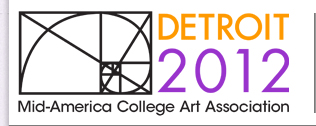Session Title
Teaching Cruel and Abject Art
Start Date
5-10-2012 9:45 AM
End Date
5-10-2012 11:15 AM
Session Description
Teaching Cruel and Abject Art
Maggie Nelson’s book The Art of Cruelty asks if cruel art is worth ingesting. This panel is broadly interested in the challenges, methods and goals of teaching confrontational, shocking and difficult art, from any time period. This is a contextual question: for example, Andres Serrano’s Piss Christ was provocative enough to be attacked, but students in the classroom may not find it shocking. Similarly, students may question the legality of established art such as Vito Acconci’s Following Piece or seek to invalidate Chris Burden’s Shoot on grounds of self-harm.
Specifically, we are concerned with pedagogical strategies: how can one effectively teach this type of art, accounting for its affective (emotional) power? What are the desired outcomes; are we, or should we be, invested in retaining the high affect of this kind of work? How can student reactions be measured and, where necessary, addressed? Are student reactions to this work changing over time, and how?
Papers for this panel might address:
“Abject” artists: Mike Kelley, Karen Finley, Robert Mapplethorpe, Pope.L, Cindy Sherman, Vienna Actionism, Matthew Barney, Carolee Schneemann, Martin Creed, Francis Bacon, Orlan, and others
Feminism: Kristeva’s abject, Judy Chicago, Hannah Wilke, Catherine Breillat, others
Identity politics: Queer abjection and/or the problematic relationship between identity politics and violent and/or overtly sexual or abject art
Censorship: The NEA 4, Pleasure and Danger, Mapplethorpe, Wojnarowicz, others
Other and related topics, including studio production, religion and art, and animal cruelty, are welcome.
Teaching Cruel and Abject Art
Teaching Cruel and Abject Art
Maggie Nelson’s book The Art of Cruelty asks if cruel art is worth ingesting. This panel is broadly interested in the challenges, methods and goals of teaching confrontational, shocking and difficult art, from any time period. This is a contextual question: for example, Andres Serrano’s Piss Christ was provocative enough to be attacked, but students in the classroom may not find it shocking. Similarly, students may question the legality of established art such as Vito Acconci’s Following Piece or seek to invalidate Chris Burden’s Shoot on grounds of self-harm.
Specifically, we are concerned with pedagogical strategies: how can one effectively teach this type of art, accounting for its affective (emotional) power? What are the desired outcomes; are we, or should we be, invested in retaining the high affect of this kind of work? How can student reactions be measured and, where necessary, addressed? Are student reactions to this work changing over time, and how?
Papers for this panel might address:
“Abject” artists: Mike Kelley, Karen Finley, Robert Mapplethorpe, Pope.L, Cindy Sherman, Vienna Actionism, Matthew Barney, Carolee Schneemann, Martin Creed, Francis Bacon, Orlan, and others
Feminism: Kristeva’s abject, Judy Chicago, Hannah Wilke, Catherine Breillat, others
Identity politics: Queer abjection and/or the problematic relationship between identity politics and violent and/or overtly sexual or abject art
Censorship: The NEA 4, Pleasure and Danger, Mapplethorpe, Wojnarowicz, others
Other and related topics, including studio production, religion and art, and animal cruelty, are welcome.


Related Paper(s)
Kinsman, Patrick. A Sketch of the Affective Classroom: Abject Art (http://digitalcommons.wayne.edu/macaa2012scholarship/12).
Marzec, Megan E. Female Flesh and Medieval Practice in the Later Middle Ages (http://digitalcommons.wayne.edu/macaa2012scholarship/13).